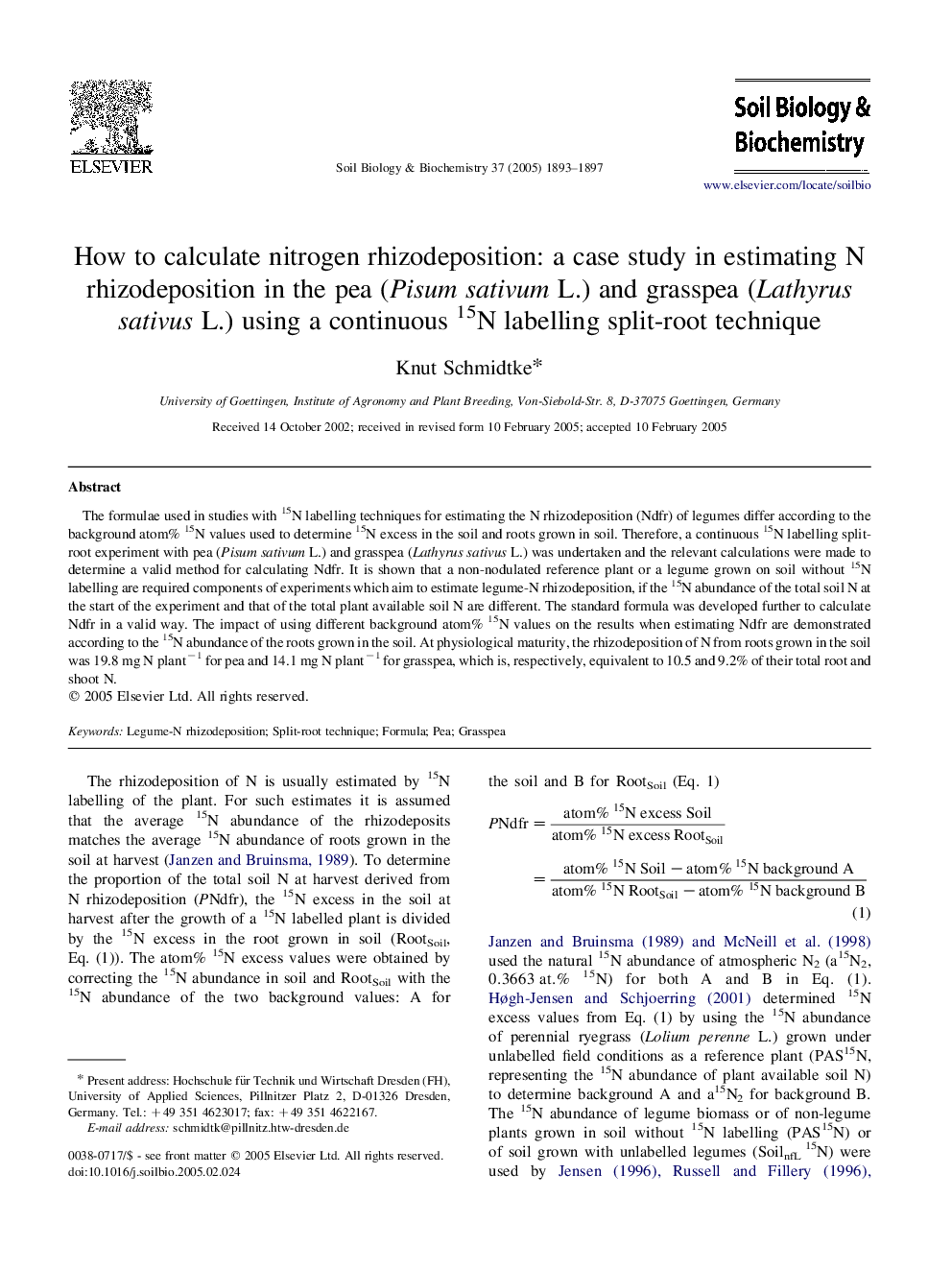| Article ID | Journal | Published Year | Pages | File Type |
|---|---|---|---|---|
| 10846266 | Soil Biology and Biochemistry | 2005 | 5 Pages |
Abstract
The formulae used in studies with 15N labelling techniques for estimating the N rhizodeposition (Ndfr) of legumes differ according to the background atom% 15N values used to determine 15N excess in the soil and roots grown in soil. Therefore, a continuous 15N labelling split-root experiment with pea (Pisum sativum L.) and grasspea (Lathyrus sativus L.) was undertaken and the relevant calculations were made to determine a valid method for calculating Ndfr. It is shown that a non-nodulated reference plant or a legume grown on soil without 15N labelling are required components of experiments which aim to estimate legume-N rhizodeposition, if the 15N abundance of the total soil N at the start of the experiment and that of the total plant available soil N are different. The standard formula was developed further to calculate Ndfr in a valid way. The impact of using different background atom% 15N values on the results when estimating Ndfr are demonstrated according to the 15N abundance of the roots grown in the soil. At physiological maturity, the rhizodeposition of N from roots grown in the soil was 19.8Â mg NÂ plantâ1 for pea and 14.1Â mg NÂ plantâ1 for grasspea, which is, respectively, equivalent to 10.5 and 9.2% of their total root and shoot N.
Related Topics
Life Sciences
Agricultural and Biological Sciences
Soil Science
Authors
Knut Schmidtke,
